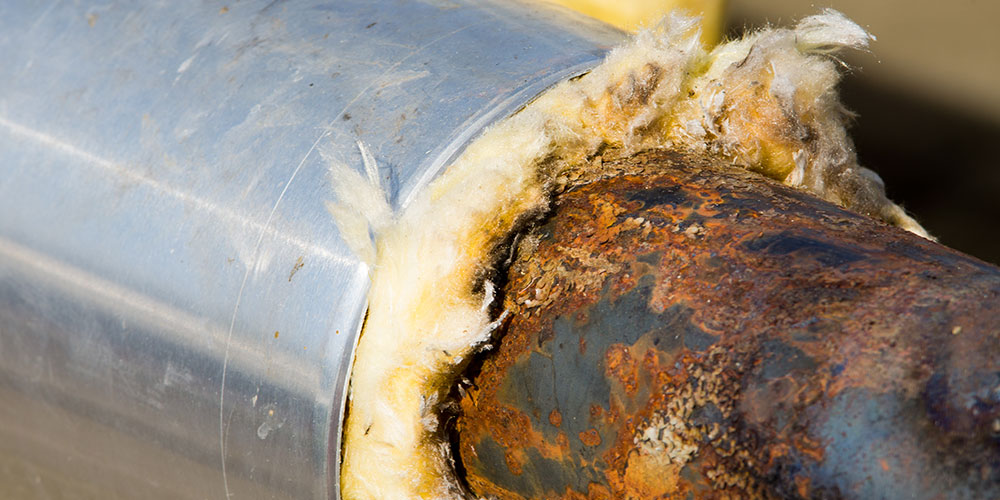industry-news
Local Efficiency Insulation Rebates
May 11, 2021

An effective mechanical insulation system is a big investment, but one that’s completely worth it because of the incredible benefits. From money and energy savings to personnel protection and safety, the reasons for insulation are numerous.
But what if you stopped getting all of those benefits from your insulation system? What if something that was supposed to save you money actually ended up costing you money to repair?
That’s what Corrosion Under Insulation, or CUI, does to facilities. CUI is well-known to many facility managers, maintenance and construction personnel for its destructive powers. Pipe corrosion under insulation is a slow but debilitating (and potentially expensive) problem.
In the simplest terms, CUI is any type of corrosion that occurs due to moisture buildup on the external surface of insulated equipment. Galvanic corrosion, alkaline acidic corrosion, and stress-corrosion cracking have all been known to happen in certain conditions.
There are several causes of CUI, but the most common—and hardest to control—is the environment. Moisture is the most important corrosive element in the recipe for CUI, and it finds many ways to get under an insulation system. From rainwater to leaks to water vapor to ice in cold service systems, moisture takes many forms and can be difficult to control. (Click here to download our free eBook on controlling condensation on mechanical systems.)
Learn more about causes of CUI here.
In exposed locations where humidity is high, it’s almost inevitable that moisture will seep through to the protected surface and, once there, it rarely evaporates, especially when the equipment being protected is exposed to adverse weather.
These conditions are ideal for corrosion to take place. Even where an anti-corrosion paint layer has been applied, it is not long before localized pitting corrosion can start.
If one thing is certain about CUI, it’s that the results are costly. A research team of corrosion specialists enlisted by congress found that the direct cost of corrosion in the United States totals $276 billion per year, with that number potentially doubling when indirect costs are also considered.
Here is why CUI is so detrimental to facilities:
Unfortunately, because it’s hidden under insulation material, CUI often goes undetected until it becomes a serious problem. It is hard to identify and expensive to test for, since testing often involves removing the insulation system, which many facility managers are reluctant to do.
Other possible detection methods could include:
Knowing where corrosion is likely to occur, such as in low spots and at certain temperatures, helps establish an inspection regime.
Unfortunately, there is no magic solution to stopping CUI. But by understanding the causes and using best practices to combat those causes, you can reduce the risks.
Read “What’s the Best Way to Avoid Corrosion Under Insulation?”
The National Board of Boiler and Pressure Vessel Inspectors also has a great in-depth article about methods for preventing the various types of CUI.
Read “Preventing Corrosion Under Insulation”
During installation of the insulation, steps should be taken to protect the surface of the pipeline or equipment from corrosion. This includes anti-corrosion paint, coating with one of the newer high-tech protective coatings, or wrapping the equipment with a water-resistant protective tape.
In situations where CUI is likely, long term protection measures may require the periodic stripping and re-installation of the entire insulation system every few years.
Corrosion underinsulation can be a serious problem if not detected early. To learn more about how the right mechanical insulation system can help protect your equipment from CUI, contact NCMI.